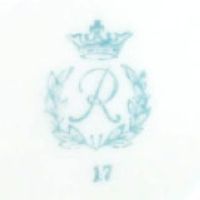
Image 011232-03-01
Used around 1918, early mark still without the "Carstens" addition.
(Picture by
Marcus Baraczewski)
Various sources state different founding dates and even Danckert in his book on European porcelain incorrectly treats two company periods like two different factories. The facts however are pretty simple: the factory itself was founded in 1900 by a group of nine independent porcelain decorators and took up production in 1901. No marks are known from this period.
The small factory was in 1903 purchased by Gustav Schwabe and its product range changed to mainly coffee, tea and dining sets. There are no marks known that were definitely used by Schwabe.
In the year 1918 the factory was taken over by the brothers Christian and Ernst Carstens who at that time already owned production facilities for both porcelain and ceramics in Rheinsberg, Haldensleben, Rathenow, Velten, Gräfenroda, Georgenthal, Greußen, Wallhausen, Sorau, Blankenhain, Lübeck, Elmshorn, Zeven and Hirschau. As part of the famous Carstens group the factory in Reichenbach steadily expanded, reaching its pre-war maximum of 170 workers in 1937.
1949 the factory employed 200 workers and as it was located in East Germany but actually belonged to a West German family it had a special status. During the first few years the newly-founded East German state had other problems to solve but then more and more interfered with business originating from West Germany, finally demanding that all such factories and companies should have an East German 'official' in the board or installed as manager. These officials of course directly interfered with regular business and hindered progress, quite a successful method which of course made it a lot easier for the state to later simply nationalize these businesses as the West German owners in the end were glad to get rid of them.
The company was nationalized in 1968 and at first became a branch of the VEB Porzellankombinat Kahla which ran the Reichenbach factory under the designation 'Werk XI' before it finally became part of the newly-founded Porzellanfiguren Gräfenthal combine in 1972.
Following German Reunification the factory was sold to an Iranian investor, however his plans to revive the brand failed and he was forced to sell the company to three Thuringian porcelain specialists only three years later.
Ever since Porzellanambiente Reichenbach started, the main focus was on either having external designers create own designs and have them produced by specialists or let them revive classic Reichenbach designs. Over time, well-known designers like Christine Klauder, Gerd Sommerlade or the duo Metz & Kindler created items or series that received various design prizes, just like Paola Navone who since 2003 created various product lines under the Paola Navone per Reichenbach brand.
For a few years the company was able to continue, even if business was not so good as expected. Financial problems finally took their toll and from November 18th 2019 the company was under control of a liquidator; the business was finally deleted from the trade register on May 5th 2020.

Image 011232-03-01
Used around 1918, early mark still without the "Carstens" addition.
(Picture by
Marcus Baraczewski)
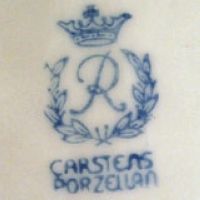
Image 011232-03-02
Used between 1918 and 1949, "Carstens Porzellan" all in capital letters.
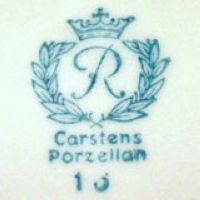
Image 011232-03-03
Used between 1918 and 1949, single color version with normal "Carstens Porzellan".
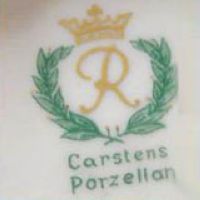
Image 011232-03-04
Used between 1918 and 1949, color version with normal "Carstens Porzellan".
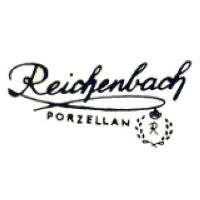
Image 011232-04-01
Used between 1949 and 1969, note the wreath with the small crowned "R".
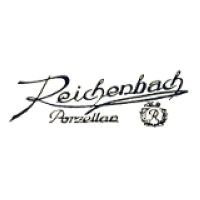
Image 011232-05-01
Used between 1969 and 1981, nearly the same as before but the wreath is topped by "VEB" instead of the crown.
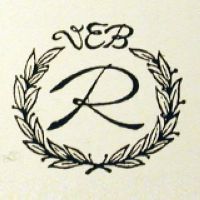
Image 011232-05-02
Used between 1969 and 1981, "VEB" above a laurel wreath containing the capital letter "R".
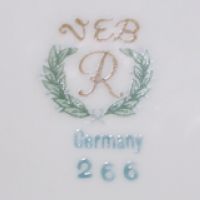
Image 011232-05-03
Used between 1969 and 1981, example of the previously shown mark in color but also stating "Germany".
(Picture: Michael Havrisko)
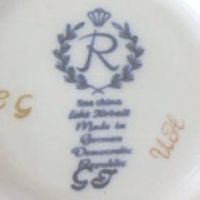
Image 011232-05-04
Used between 1968 and 1990, cobalt blue version with "Fine China" and "Made in German Democratic Republic".
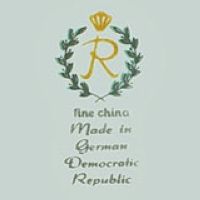
Image 011232-05-05
Used between 1968 and 1990, color version with "Fine China" and "Made in German Democratic Republic".
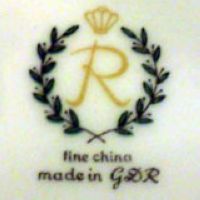
Image 011232-05-06
Used between 1968 and 1990, color version with "Fine China" and "Made in GDR".
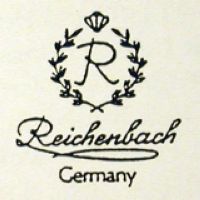
Image 011232-05-07
Used between 1981 and 1990.
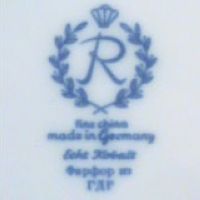
Image 011232-05-08
Used around 1985, cobalt version "Fine China" and "Made in Germany" and cyrillic export mark.
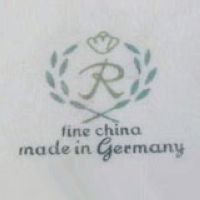
Image 011232-05-09
Used around 1985, barely used on porcelain, actually was the print used on packing material. Stylized laurel wreath, "Fine China" and "Made in Germany".
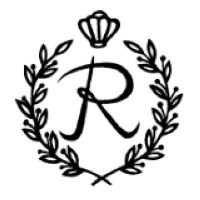
Image 011232-05/06/07-01
The basic mark form was re-registered as №·DD643614 on August 7th 1981 and extended in 2001.
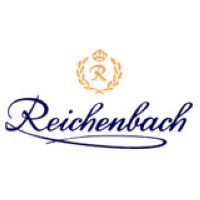
Image 011232-07-01
Company logo used from around 2000 onwards.
© 2004-2025 C.S.Marshall, all rights reserved